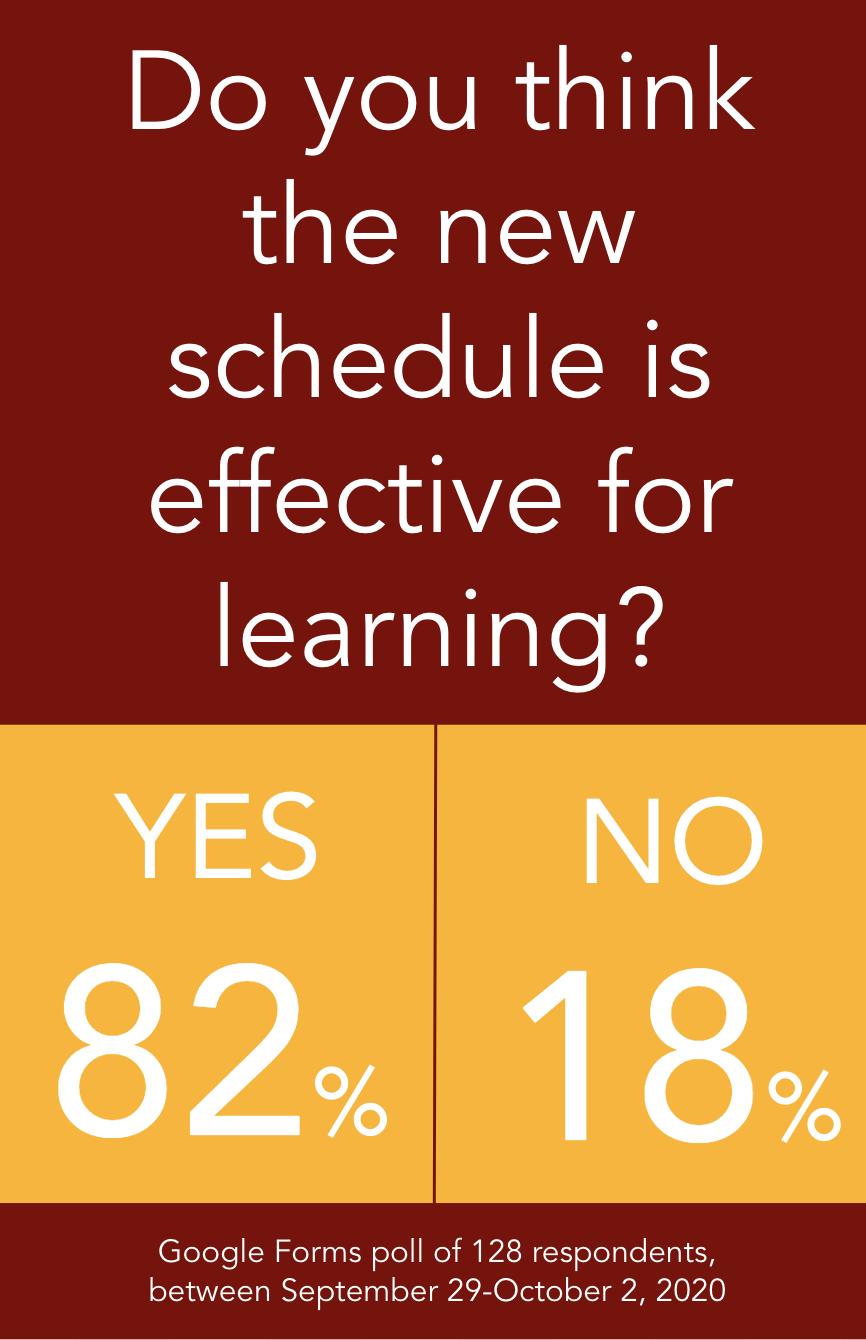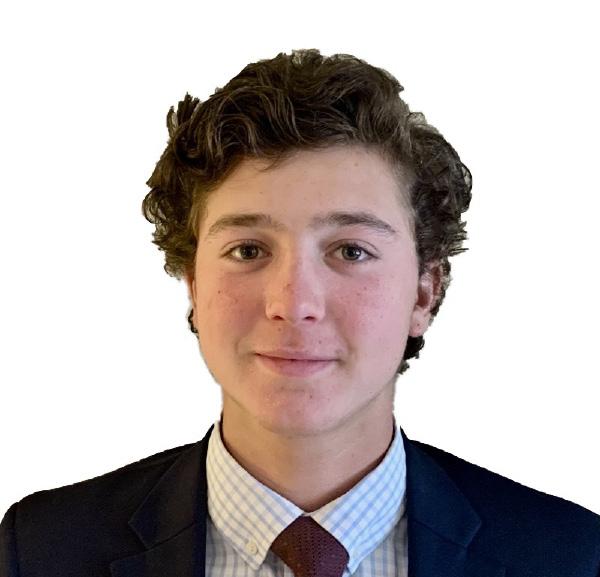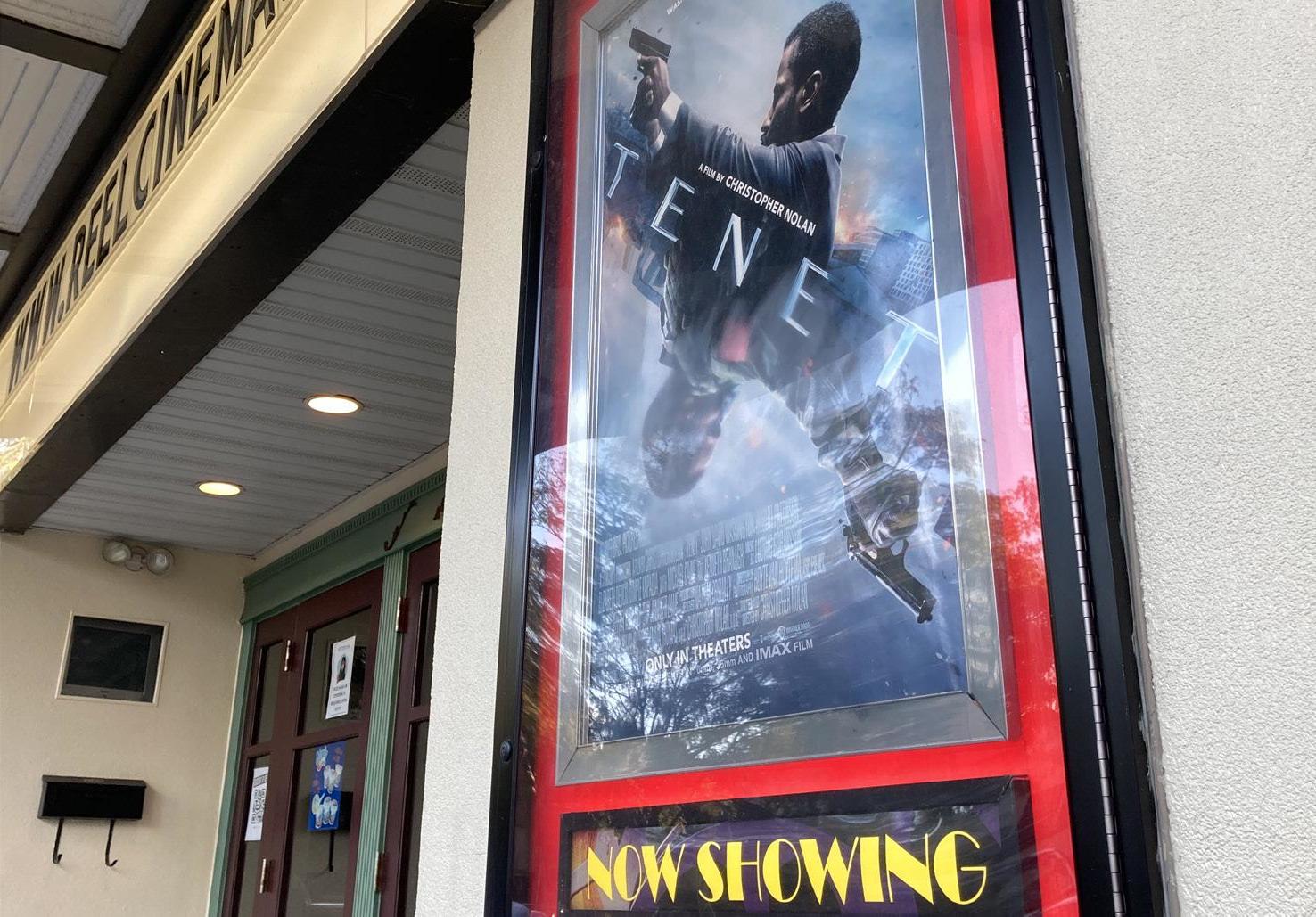
38 minute read
Teachers tackle new schedule
academics
International students working virtually, twelve hours ahead
Advertisement
Tyler Zimmer ’21
The upper school building has a new gleam to it, a welcoming presence like an old friend. I might not have noticed how its modern glass and old-fashioned stone intersect if not for all the time I spent away from Wilson Hall’s grandeur. This is why so many of us returned to campus—it feels like home.
Even students studying from their actual homes feel welcome. Paul Li often reads aloud in Mr. Keefe’s English IV*, and Jaamir Shaw answers physics problems for Ms. O’Brien, both virtually. Everybody seems to feel close to home, no matter which one they chose. But this is not so. For some, home is across the world; and as our clocks hit noon, three students’ clocks strike midnight. Haverford is rich in devoted students, ready to take on a challenge no matter where they choose to study. Three Haverford Fifth
DANIEL HOU ’22
Formers, Daniel Hou, Julius Huang, and Shibo Zhou, have decided to take on virtual Haverford from China. “When school ends at 2:45 p.m. for you, it ends at 2:45 a.m. for me,” Hou explained. After school, local students play sports, do homework, and eat dinner. For Daniel, after school activities include brushing his teeth, tucking himself in, and going to sleep. Adiyan Nayak ’24
The class of 2024 faces the challenge of adjusting to the upper school in an unprecedented way. Through mask-wearing, social distancing, and virtual meetings, this year’s Third Formers have had to find a way to grow accustomed to the upper school life. The school had to take several precautions in order to reopen. Beyond the physical changes, many clubs and activities have been either canceled or transferred to virtual platforms. For some, the restrictions due to the coronavirus have partially hindered the Upper School experience. “We can’t do everything that the upper school allows,” Third Former Gavin Stamps said.
The majority of Third
Formers are relatively comfortable with the new schedule. Third Former Ethan Lee also commented on the limited opportunities students are offered. “We haven’t experienced the actual upper school yet,” Lee said. “It’s been more like a smaller version of it.” Although students are disappointed in the reduced opportunities, the simplicity of the new schedule and the lightened workload have made the transition smoother. “I only have two to three classes of homeThis means all homework and activities are pushed to the following day. “I had to push my bedtime to 3 a.m.,” Hou said. To compensate, his teachers push deadlines back twelve hours. “They were nice enough to never set the due time at 11:59 p.m. This way, I can do my homework while the guys in America are asleep.” Fifth Former Julius Huang, studying virtually from Shanghai, China, is in the same boat, but sleep doesn’t seem to be his concern. “It pushes my schedule back three hours,” Huang said. “I’ll still be fatigued after a long week, and a nap is quite necessary to keep my energy.” Huang’s concern lies in human connection, or lack thereof. “My advisor does not ask me to join lunch meetings,” Huang said. While Huang has no need to eat lunch at midnight, he still misses out on the lighthearted conversation that provides a break from demanding courses. “Also, sometimes my lack of sleep affects my ability to participate in my activities, and I’ll have to take a day off.” In a busy Fifth Form year full of extracurricular activities, both Hou and Huang worry about aspects of their separation. “Because I’m studying online, I’ll have to temporarily put down robotics practice, which is the single most important group activity I have at school,” Hou said. “This is very hard, but it’s the only option I have right now.” Hou’s loss of robotics and Huang’s fewer human connections certainly pose problems, but both students agree that continuing Virtual students Baoer Li ‘21 and Huaidian Hou ‘22 in math class
Haverford from China is better than the alternative. “The United States, Haverford in particular, provides a highly valuable education. The critical thinking skills it cultivates and its encouragement for independence and self-study have no match in China.” Alongside the top-tier education neither student wants to forgo, Hou thinks staying in China has its perks. “I am able to stay with my family for a long time. I haven’t been with them for this long in years.” Coronavirus fears in China have decreased. “I get to go outside every day without needing a mask,” Hou said. “Everything has almost gone back to normal in China.”
TYLER ZIMMER ‘21
7,000 miles and a twelve-hour time change certainly create a barrier between these three students and normalcy. Still, they’ve taken the challenge in stride, not only succeeding in the gradebook but also taking an active role in class. Dr. Gottlieb, who teaches both Hou and Shibo Zhou, thinks that each student is not only making attendance but thriving in his class. “They’re turning in their work,” Dr. Gottlieb said, “they’re asking good questions, and
Third Formers transition to Wilson amid strange year
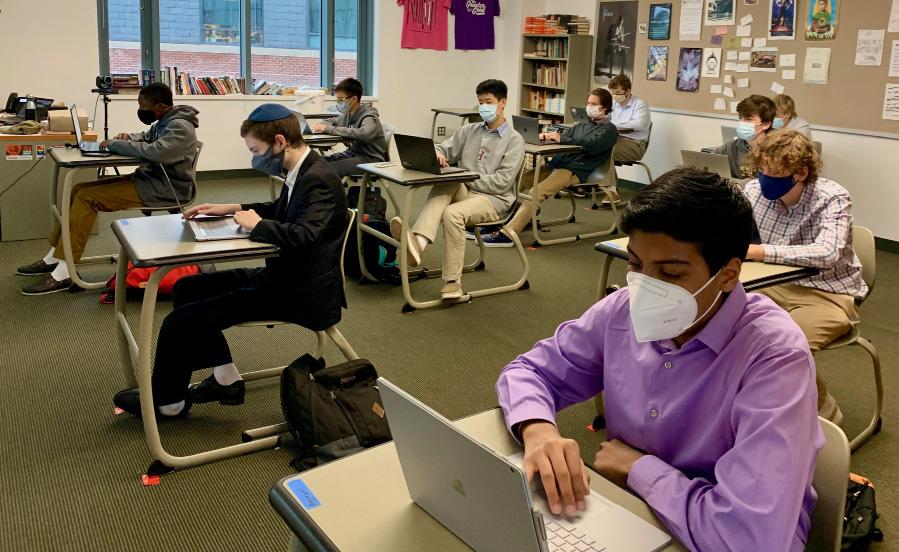
they’ve done an impressive job.” Third formers in Mr. Kolade’s B period English I class, October 2, 2019 work,” Lee said. “That’s made it a lot easier heard that a lot of people have all their hard for me.” classes in the second quarter.” Third Former Render Ford also thinks the Ford also said that he doesn’t believe the new schedule has been manageable, but he COVID-19 restrictions have been too dewonders about how it will play out in the manding. following months. “I think they’ve kept it safe, but not super “I think it’s been easier so far, but I’ve restricting. It’s been pretty open, while still
BERNIE RODGERS ’21
keeping us safe.” The majority of Third Formers are relatively comfortable with the new schedule and the restrictions they’ve had to deal with. “I think they’re prepared. I think they’ve been preparing [to go virtual] since last year,” Ford added. “But I think overall, the first
Jeffrey Yang ‘22
When students grew anxious about the return to school this year, adjusting to new quarter semesters, ninety-minute classes, and health safety measures, teachers busily revised their curricula to fit those same enormous changes. Welcoming boys into school halls was not the beginning of their journey; planning began early in the summer.
Those who have been in the teaching profession for a few decades think the prescribed classroom layout, with individual desks evenly spaced out in rows and columns, reminds them of the late-twentieth century. “I haven’t taught in rows since 1987. It’s the 1950s industrial [style] when it was ‘Everyone line up and be a good soldier,’” physics teacher Ms. Carol O’Brien said. The lack of ability to form desks into tables or circles is extremely difficult in classes such as English, where class discussions play a central role in the experience. English Department Chair Mr. Thomas Stambaugh, who previously arranged his class in a tight circle, said, “[The new classroom layout] just changes the spirit of the
MR. MATT ATOR
room.” Additionally, group work has been challenging for teachers across all departments. In math classes where students previously collaborated to solve problems or explore a concept, teachers are trying to keep some sense of interaction by instructing students to work with their direct neighbors, while maintaining a six-foot distance in between. They also rely on online platforms where students are able to first explore themselves and then reflect together as a class. “In Geometry, using Geogebra allows students to explore kind of on their own,” math teacher Mr. Matt Ator said. “I give them a framework and then they can play with the diagram and move it around in a way that paper and pencil can’t. We had a really good class where everybody kind of typed in their thoughts, and I just put it all up on the board and said, ‘All right, do any of these things stand out to you?’” Similarly, science teachers address the hole left by collaborative labs and equipmenthandling experiments by providing online interactive sites and pre-recorded videos. All the instruments in the science classrooms are tempting, but health safety measures limit the physical interaction students can have with the equipment. “I have the benefit of being in the room with all the equipment,” Ms. O’Brien joked, “and I can’t use it.” While many feel they have a relatively firm grasp on in-person educational changes under COVID-19 precautions, teachers still grapple with virtual students’ experiences. The first challenge facing teachers is the technology setup—cameras, speakers, and virtual meetings. “It’s like acting as a television producer while teaching a classroom of students,” Mr. Stambaugh told a recent upper school English department meeting. Additionally, many faculty feel as though they are struggling to provide virtual students with an engaging atmosphere and online activities that match the in-person experience. “I only have one virtual student, but the challenge of providing something that is as stimulating at home as it is in the classroom is really, really hard,” Ms. O’Brien said. Mr. Ator added, “I’m trying to pair inperson students up with virtual students to make sure that everybody’s getting connected.” Even for those who have found that they must condense much of their course, trimming down material has helped teachers pinpoint the most important lessons. “You kind of feel like, ‘Everything I teach is important,’ but you really have to take a look to say, ‘What is most important? What do I really need students to come out with?’”
The new schedule features three rotating long blocks during an intensive eight-
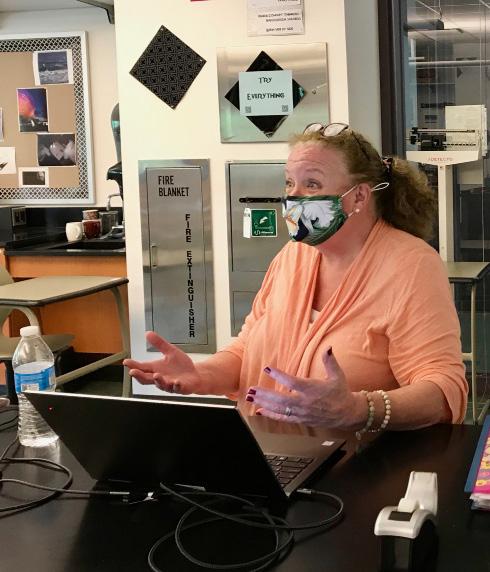
Ms. Carol O’Brien teaching Mr. Ator said. “I think it’s a really good teaching exercise too.”
MR. THOMAS STAMBAUGH
In addition to deciding the most important lessons, faculty are also concerned about
JEFFREY YANG ’22
pre-planning daily ninety-minute classes. “Trying to gauge what ninety minutes looks like on any particular day [is a challenge],” Ms. O’Brien said. “I’ve aired on the side of being over-prepared because I am scared to death of being underprepared.” Regardless of this year’s challenges, teachers are excited to be back on campus and meet many students in person. Some view the upcoming year optimistically, a perfect trial period for ideas they have previously thought about but had not been able to implement. Mr. Ator said, “I think everybody is going to come out of it [the year] as a better teacher just because of the opportunity and necessity of experimenting with our styles.”
Standardized testing plans gain clarity
WEthan Chan ’23 PA-NJ-DE-MD area have already been “Given that colleges have gone test-optional hen students grew anxious about taken for the November SAT testing. The and adopted a policy that ensures students the return to school this year December testing seats are projected to be that means exactly as it reads, it is not the from education, occupations, the same as the registration deadline creeps worst thing that could have happened,” Aliand almost every aspect of our lives, the closer. Other areas such as the Seattle region aga said. “Many of the top universities and coronavirus has seemed to disrupt every- have been either completely booked or 75% colleges still remain test-optional such as thing. Despite the gradual diminishing of full for the November 7th testing date. With Cornell, Harvard, Yale, Penn, and numerous cases and glimpses of normalcy returning, the 50%-75% in our region, this leaves the others have followed suit. Only a handful of people are still under strict safety protocols. remaining 25% of students in a dilemma. colleges such as Cornell and Stanford are still With many regions of the country under Just one of the millions of students unyielding of their ACT and SAT requiretight safety measures, standardized testing across the nation not currently in the sought ments despite circumstances. for millions of students is still an unknown after in person testing pool, Sixth Former variable. Agustin Aliaga shares common experiences Still in a quandary of college admissions, standardized testing for students across the country has been extremely difficult. In an attempt to alter the testing procedures and and thoughts with many other test takers. “I had gotten to take the SAT and one of the three subject tests I was planning to take before the pandemic began. However, I did not “Many universities have made the right decision by going dates for test-takers, the College Board has get the opportunity to take the other two,” test-optional... stanbeen forced to cancel numerous test dates at the last minute, leaving many to wonder, what will happen now? Aliaga said. “While I am planning on taking tests as soon as possible, I doubt that testing facilities near us will open if they have not dardized testing is mostly unnecessary.” One answer to that, the College Board has decided to cancel their “digital atalready.” The last-minute cancellations and shortage QUINN LUONG ’22 home SAT” due to the rare, but now avail- of testing sites nearby for students, this has able in-person testing. Limited in number, been a main reason for some of the specularegistration for these testing seats have been tion of what the near future of standardized With the current events occurring that affect another problem for students looking to take testing holds. standardized testing, this is just another reathe SAT and subject tests. In these uncertain times for seniors such as son for some students to ponder upon the With the abrupt cancellation of many test- him during their crucial college application basis of tests such as the SAT, as a whole. ing sites, the ratio of students to testing spots process, Aliaga remains positive. With Fifth Former Quinn Luong is an advocate and dates is even greater. According to the the national scramble to grab a testing seat, for performance in the classroom and extraCollege Boards’ “Sat Test Center Capacity many forget to keep in mind that most col- curricular activities to determine a college Update” site, 50%-75% of the testing seats leges and universities have gone test-option- candidate’s true capability. in the Philadelphia-Camden-Wilmington, al. “The SAT does not measure your intelligence at all. COVID has allowed many colleges, like the UC schools, to have SAT scores be optional, and I hope this will allow schools to reevaluate the necessity of SAT’s.” For students such as Quinn, this situation has turned out to be quite well for him. In similar fashion, Agustin has also commented on this topic. “I also think that the many universities have made the right decision by going testoptional. Regardless, I think this has brought forth a realization that standardized testing is mostly unnecessary and that in the future colleges should be test-optional.” For students like Quinn and Agustin, they have been able to utilize the pros in this complicated scenario and colleges and universities can now take more focus on the other aspects of their college application. Whatever the opinion or situation for each student, the current state of affairs still remains hectic as testing sites and seats are almost always fully booked. An effect of the virus, students and applicants will have to make the best of these challenging times and the college application process will surely be something unique this school year.
Quinn Luong ’22
In response to the outbreak of systemic injustice, on June 18, Head of School Dr. John Nagl formulated a broad action plan to create a more just and equitable school. Individuals from all aspects of the school community have taken an evident stance in allyship.
DR. JOHN NAGL
In particular, faculty have taken a united stance on the pressing matter. Over the course of the summer, over half of the faculty read Ibram X. Kendi’s How to Be an Antiracist. Dr. Nagl expressed gratitude for the faculty’s commitment to social justice. “From the very top of the school, to the board chair and the trustees, to all the way down to individual faculty members and students,” Dr. Nagl said, “I am heartened by the commitment I see. However, I am still concerned by the amount of work that there is still left to do.” As Dr. Nagl remains quietly optimistic about the work that has been done, he, along with many members of the community, are still worried about the lack of enthusiasm for diversity, equity, and inclusion (DEI) work. “It saddens me to know that there is an evident diminishing lack of energy for the Black Lives Matter movement across America,” History Department Chair Ms. Hannah Turlish said. Data from a September Index poll showed that around 70% of the student body is willing to reflect on how they could strengthen our community. Some students within our community are also still concerned. “It is evident within social media that the Black Lives Matter movement was treated as Kelly said, “The lunch block is an hour and fifteen minutes long, which is my favorite part of the schedule.” Mirin agreed about the benefits of the lunch break. But he also suggested, “If Haverford took the half-hour out of the lunch period and put it into ten minutes breaks. That would be helpful.” While opinions vary within the walls of our school, virtual students have experienced something quite different during their first weeks. “It’s nice to be in my own house. I think a mere trend to some. You could see the people who posted black squares a few months ago are nowhere advocating for justice today,” Sixth Former Kethan Srinivasan said. Over the course of the past weeks, the administration was mainly focused on simply reopening the school. This raises a pertinent question: does the administration have the time to focus on diversity, equity, and inclusion work? “We have to make time for it,” Dr. Nagl said. “We are continuing to work through the challenges of COVID, but we are also devoting significant resources to combat all forms of discrimination. We are committed to doing both at once while recognizing our limits of human endurance.” While Dr. Nagl is relying on the community to continue this work, he is also conscious of the burdens it places on the faculty. “There is so much strain upon the faculty who have to teach remotely and in-person and simultaneously keep working on antiracist work,” Dr. Nagl said. Director of Diversity, Equity, and Inclusion Mr. Brendon Jobs has been advocating for teachers to participate in antiracism efforts and coming to faculty Supporting Educational Excellence in Diversity (SEED) workshops. “Faculty in institutions are so important. I didn’t have my first male Black teacher until I was a sophmore in college,” Mr. Jobs said. “Often too many faculty and community members are nervous about how they will be received by students, but we need to show up for them.” The administration has been working to diversify the community at every level; in fact, thirty percent of the board of trustees are people of color, and the faculty is the most diverse it has ever been. “We still need to increase the diversity in all aspects of our community,” Dr. Nagl said. “Although we made progress, we are committed to hiring faculty that are more representative of the student body.” Aside from the few electives about DEI topics offered, the administration does not necessarily intend more electives. However, Dr. Nagl stressed that the administration is working on critically examining the curriculum. “I don’t think you’ll see new courses be it’s actually working out pretty well. It would definitely be easier if everyone was on virtual,” Fourth Former Matthew Collier said. While virtual learning seems cozy, students online also have their own difficulties. “One thing that would help is to get the teachers better microphones. At some points, it gets really staticky, or some other noise interrupts when they’re speaking. Also, maybe move the camera closer to the whiteboard when they’re gonna take notes,” Collier suggested. Collier planned to return to school in-peradded. We want to make sure the current curriculum we teach is diverse and vetted,” Dr. Nagl said. Still, students expressed dismay over the lack of topics they wanted to learn within their classrooms but were never taught. “We have to understand the perspectives of people of color within our education,” Third Former Chase Nelson said. Dr. Nagl is confident in the curriculum and courses offered, such as Modern Black Lives and Human Relationships. “When I asked the upper school to create the Human Relationships course, my vision was that it would be a requirement for graduation. Human relationships are such an integral part of life and not understanding them causes problems within society,” Dr. Nagl said. While it is evident that the school has a long way to go before it’s truly antiracist, this action plan and our community serve as the son possibly by the second quarter. But on Tuesday, September 29, the first case of COVID-19 was identified in the Upper School. “I don’t really feel like it affects my decision to return too much. If more than one person gets infected, then I will start to maybe change my mind a bit,” Collier said. Both virtual and in-person students have their own worries about what is to come. But all agreed that while the school is currently doing a great job, there are certain areas where things can be further improved. Or maybe, these so-called flaws are just
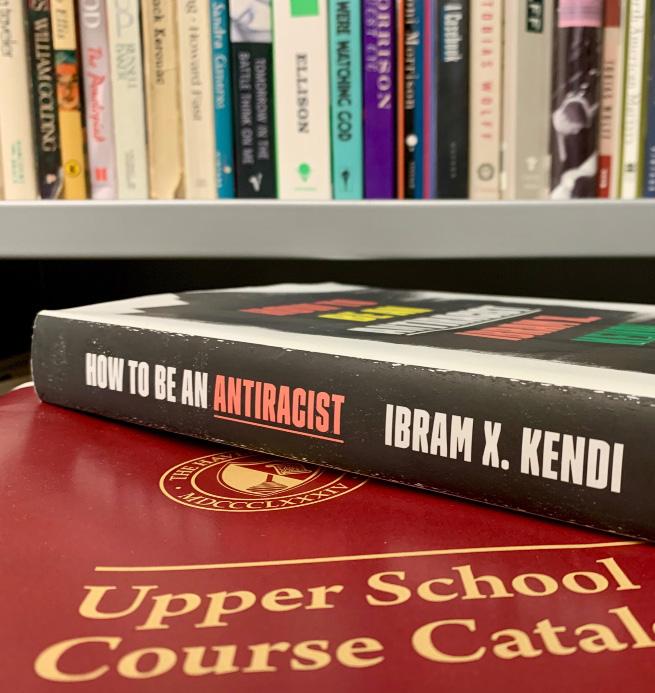
BERNIE ROGERS ’21 impetus of the greater change for social justice and equity.
DR. JOHN NAGL
Dr. Nagl said, “There is still much more room to grow at Haverford. We need to create a school and a society that properly values all of the underrepresented voices that make
Quinn Luong ‘22 (right) intervieiws Dr. Nagl via Google Meet

Virtual vs in-class cont.
up this very rich country.” SCREENSHOT BY QUINN LUONG ’22 compromises that had to be made. “I know that. We’re doing the best we can,” Kelly said. “The only things that I don’t like about this schedule are the long classes. But I’d say that was the right choice. You kind of have to have those long classes. It was only a matter of how you spend it sitting in a chair for 90 minutes and have the most fun out of it.”
neighborhood
Bank to replace Bruegger’s Bagels
Tate Conklin ’24
If you want to search for the retail banking capital of Haverford, Pennsylvania, look no further than the intersection of Lancaster Avenue and Haverford Station Road. If you are like me, you may have been a regular at Haverford Plaza’s Bruegger’s Bagels. Going forward, you’ll have to trade in bagels and cream cheese for bags of cash. The demolished 390 block on Lancaster Avenue will become home to a brand new 3,028 sq. ft. Chase Retail Bank branch. It will join the existing Wells Fargo and TD banks at two other corners of the intersec-
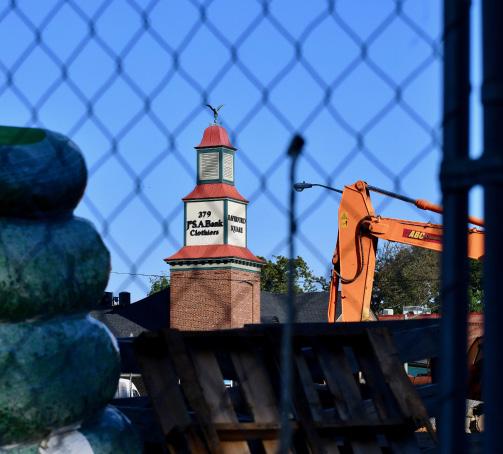
MR. THOMAS STAMBAUGH The construction site at Haverford Plaza, across Lancaster Avenue from Haverford Square Ian Rush ’22 and I would attend local car shows in South Florida. Because of these shows, I fell in love with classic cars at a very young age. As I grew older, my affinity for cars diminished and the hobby of going to car shows slowly faded. It wasn’t until I came to Haverford that I revitalized my lost love. I met many other kids who shared the same passion, and I rekindled my relationship with these machines.
A couple of weeks ago, I attended my first car meet in Ridley, Pennsylvania. I had no idea what to expect. I arrived to see two decked out Honda Accords, a Foxbody Mus-
tion. That’s right, three banks and the cBOP baby boutique will soon flank the intersection, just yards from soccer and baseball’s Memorial Field.
COMMISSIONER MR. SCOTT ZELOV
Lower Merion Township’s Ward 10 Commissioner Scott Zelov said, “While there are banks on two of the other three corners, the project complies with the Lower Merion Township zoning code, and will have more green space and a smaller footprint than the prior retail building.” The parking lot will also be redesigned. “The awkward and unsafe parking entered from the long curb cut on Haverford Station Road will be eliminated,” Zelov said. “The IAN RUSH ’22 be this bad. As time passed, the parking lot filled with cars I had never seen ever in my life. Two Nissan 300zx’s, a slammed Acura TSX, a Chevy Trailblazer SS, and even a Fast and Furious-esqe 04 Honda Odyssey. The atmosphere was for me. The Philadelphia car scene has been alive for over a hundred years. The first Philadelphia Auto Show was in 1902 at the old Philadelphia Convention Center in University City. The underground scene in Philadelphia is a diverse community with members of every class, sexual orientation, and ethnicity. Despite their cultural disparities, the Philly
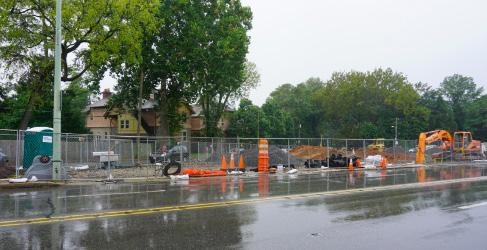
Haverford Plaza construction sidewalks will be wider, making it easier and safer for Haverford College and Haverford School students, and others who walk to Haverford Square and to the Haverford Train Station.” In addition to the design changes, Zelov pushed for earth-friendly additions. A rain garden will be implemented to aid a stormwater management system. Students may start to notice more butterflies and birds in the neighborhood thanks to the Planning Commission’s suggested plantings of native and non-invasive trees and wildflowers. Despite its transformation to yet another car community is a family, bound by the all love that they share. This was noticeable from the very second I started meandering through the rows of cars. They did not matter who I was, how old I was, what I looked like… All that mattered was that we were all there for the same reason. I fell in love with how accepting and open everyone was. At the meet in Ridley, I was able to meet local car photographer Jack Olszewski. He described the community as “very welcoming and accepting.” I knew there was more to this story than what he was sharing. Olszewski was a man of few words, but he put me in touch with Jay Lyons, owner of AutoMotoSpecialists, based in Collingdale, Pa. Lyons, deeply involved in the community, has worked there for eighteen years. Lyons is not only a big part of many events in the area but also across the Northeast. He was able to give me insight as to how the community has evolved. “The biggest changes I’ve seen is the change in desirable cars. It used to be old muscle cars that were super desirable and valuable. The value of ’60s muscle cars has decreased, and ’80s and ’90s cars have skyrocketed,” Lyons said, via Instagram DM. When asked to elaborate on the growth of
TATE CONKLIN ’24
bank, this plot of land holds significant history. Back when Haverford was The Haverford College Grammar School in the late 1800s, the surrounding area was residential. This historic triangular property was once the site of Wiltonhurst, the Victorian home of prominent Haverford lawyer Anthony A. Hirst. The home stood for decades and was passed on to generations. As time has passed, this property has been rezoned and developed into part of Haverford’s shopping dis-
A glimpse of Philadelphia’s underground car community
Some of the cars at a September 11, 2020 meet-up
For as long as I can remember, I tang, and an old Toyota bus. I thought to have been fascinated by cars. Al- myself, “This is it?” I knew it was going to most every weekend, my father be a small meet, but I did not expect it to

trict. the community, Lyons had a strong opinion. “As far as car culture goes, that has taken a terrible turn. The younger generation cares less about unique builds and high quality and more about ‘clout’ and social media recognition.” Even though his contempt for the younger generations is obvious here, he still had nothing negative to say about the community as a whole. “Every time I go to meets I make new friends,” Lyons said. “People generally show tons of love. It’s awesome.”
IAN RUSH ’22
At the end of the day it’s not about the cars. The cars are the glue that brings people together, creating a unique culture. As a reserved young man, attending a meet was a bit scary for me. But when I arrived, I knew I belonged.
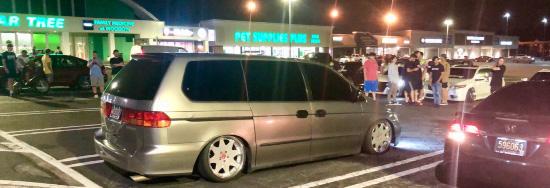
Page 15 Autograph Brasserie Restaurant Review
Chase Shatzman ’24
This pandemic has thrown a wrench into our indoor culinary experiences these past months, but recently many local restaurants have put in an admirable effort to accommodate the ever-growing crowds. Autograph Brasserie, located in the town of Wayne, PA, has gone all out to ensure that their patrons experience a fine dining atmosphere, but they have also gone out of their way to make sure their customers forget that they are situated under a gigantic tent overlooking a parking lot.
This past Saturday evening I joined the brave souls who ventured outside their homes and entered the realm of pandemic cuisine. First, it should be noted that we dined inside the restaurant and not under the massive outdoor tent structure. Secondly, it was comforting to observe that tables were at least six feet apart and that all restaurant employees were masked at all times during our evening. Autograph Brasserie has clearly reached its goal of adhering to the rules of dining during the pandemic while continuing to present contemporary American cuiTripp Ronon ’24 Alas, a neighbor complained that the size of
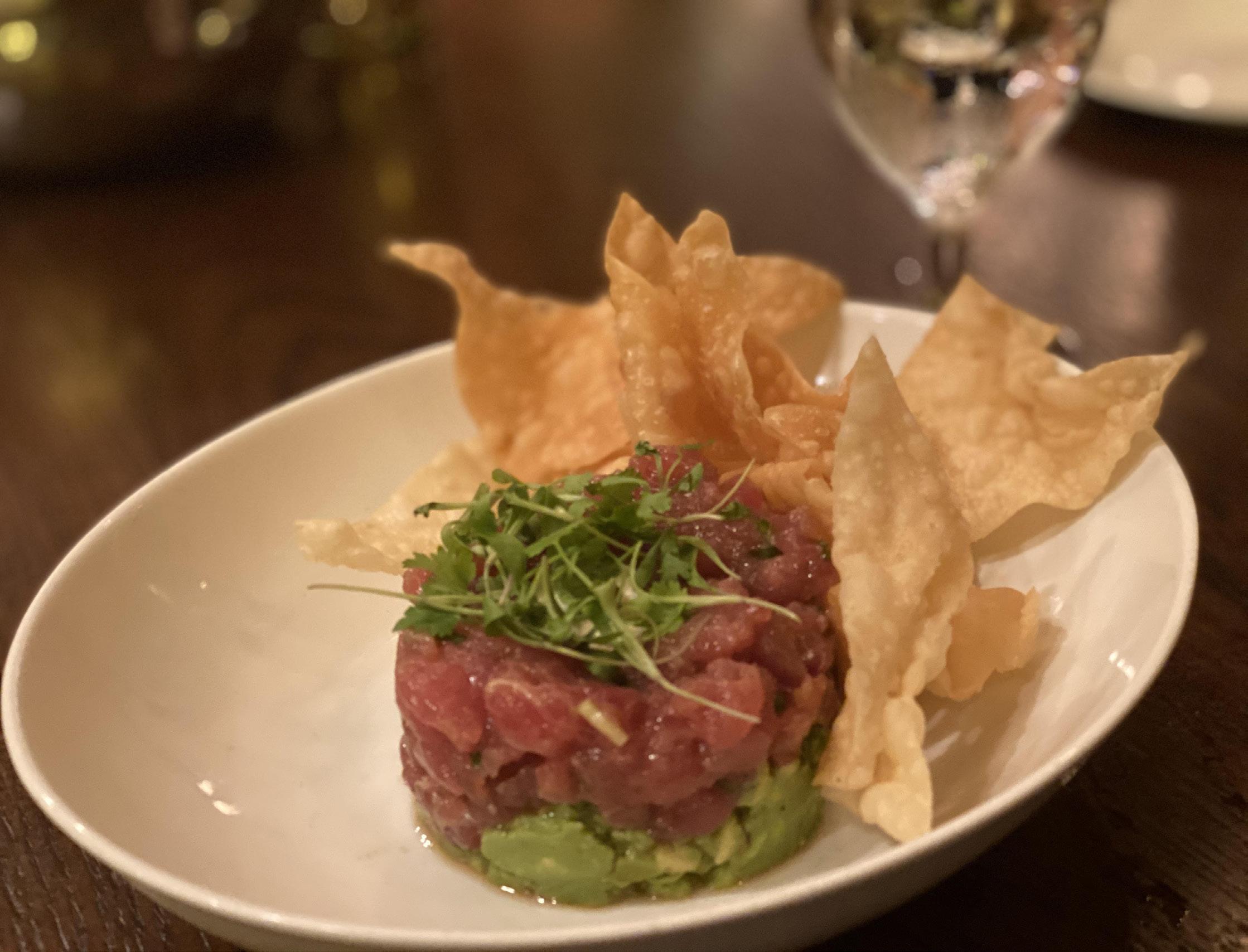
Autograph Brasserie’s tuna tartare appetizer sine. the artistic and aesthetically pleasing presen Do not be fooled by the opulent fleet tation. of automobiles parked around the big white tent. This restaurant offers a menu for those who desire a meal that ranges from hamburgers to tuna tartare. Presentations are often rudimentary and This restaurant offers a menu for those who desire a meal the menu items were found to be exactly as that ranges from they were described. A member of my party ordered the shrimp cocktail which was served awkwardly on a rectangular plate. Unhamburgers to tuna tartare. fortunately, it was found to be overly salted but contained shrimp that were substantially If you visit Autograph Brasserie you must sized. In addition, the Mahi Mahi was a little try the two most outstanding features of our overcooked but this was overshadowed by meal. First, the tuna tartare appetizer was not
CHASE SHATZMAN ‘24
only admirable to look at, but it was one of the best plates to reach our table. In fact, we ordered four of said appetizers, all of which appeared fresh, had a flavor to match, and were certainly a unanimous thumbs up. The part of the meal that would inspire anyone to return was the hamburger entree. This burger had it all, bacon, flavor, cheese, and a generous portion of truffle fries on the side. One word of advice, we ordered our food cooked medium and a medium-well, but both of these had undercooked centers. Otherwise, you should not miss this delicious entree if you decide to visit this restau-
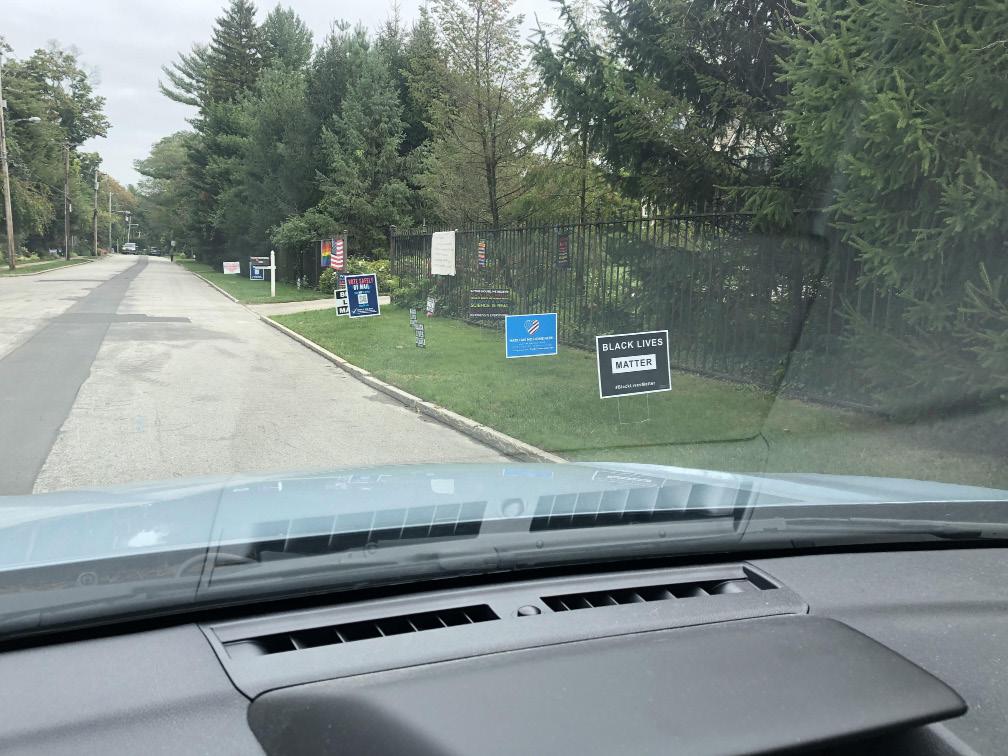
Lower Merion Township forces Bryn Mawr resident to remove large Black Lives Matter sign
Kathy Smith, resident of Bryn the sign violated Lower Merion Township’s Mawr, placed a large and long personal expression signage rules. According “Black Lives Matter” sign across to Township rules, twelve square feet is the her property’s front fence on Fishers Road. maximum size for personal expression signs. The sign was the talk of the neighborhood As the Smith’s sign was well over twelve over several months. It was a beacon and square feet, the township had no choice but catalyst for three impromptu neighborhood to force the family to take it down. meetings to discuss race and equal justice. This is their response: rant.
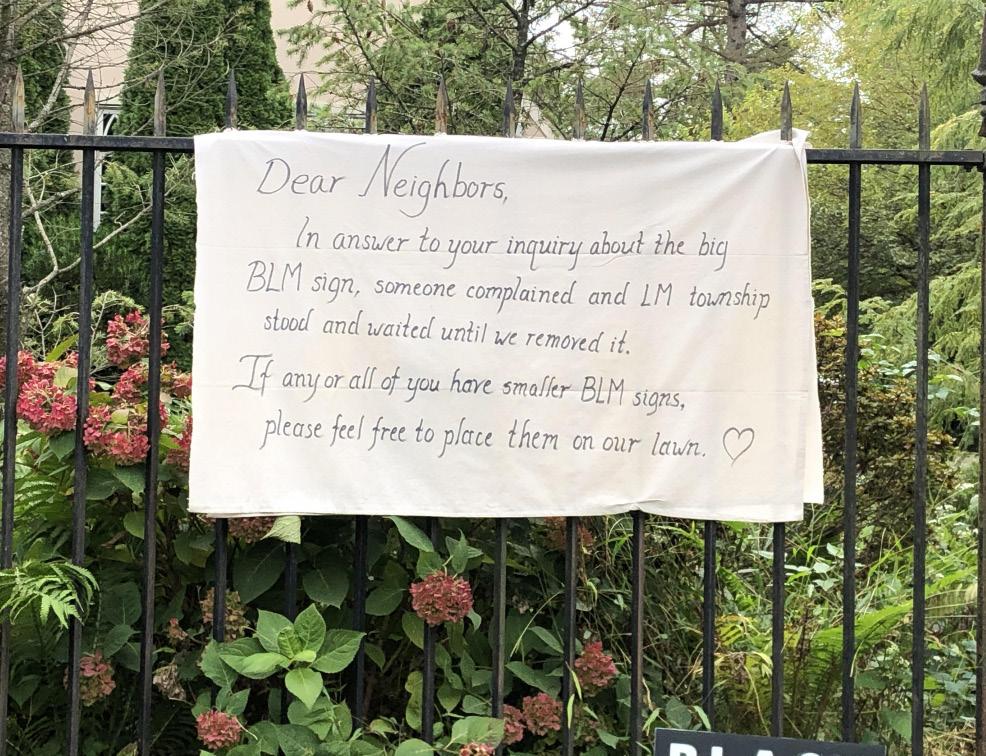
Smith family’s lawn full of new signs
COURTESY OF TRIPP RONON
The Smiths put up another sign, this time meeting the code for personal expression rules. The front fence now also includes a pride flag, an American flag, and a message to the neighborhood.
The Smiths’ lawn on Fishers Road is now populated with signs promoting social justice.
campus opinions
Tyler Zimmer ’21
Before I voice my constructive criticism, I’d like to show my appreciation to the cafeteria staff. During the summer months, they were tasked with entirely reforming the way they make us lunch, and they have done an extraordinary job with their new processes. Their Ford-esque factory line system is nearly perfect, but the food within the brown boxes is not. Sodexo must rethink their go-to foods, as the high sugar load and small serving size do the students a disservice. Despite the scientific notion that breakfast is the most important meal of the day, I often find myself missing it. Two snoozes and suddenly my planned three-egg breakfast has become a protein bar. With back-toback ninety-minute classes to start the day, a well-rounded lunch has become a necessity for me. Our lunches are not healthy enough. Looking through the two-week rotation, I noticed that every main item is carb-heavy: dismantle stereotypes about Asians, it is entirely ineffective and problematic. The book not only utilizes common stereotypes about Chinese people, but it also introduces toxic and offensive stereotypes to English classes that we, as a group of Third Formers, had never even encountered. The story simplifies Chin-Kee’s entire personality into a Chinese racist caricature, which is difficult to read and wildly uncomfortable for Pan Asian-American students. Although the purpose of the novel was to utilize stereotypes and racist tropes to dismantle them and educate us on assimilation, pairing these elements with outrageous illustrations normalizes racism towards Asians. The novel feels like a Young Adult graphic novel, but the innuendos and jokes clearly do not match the audience age, detrimentally affecting students.
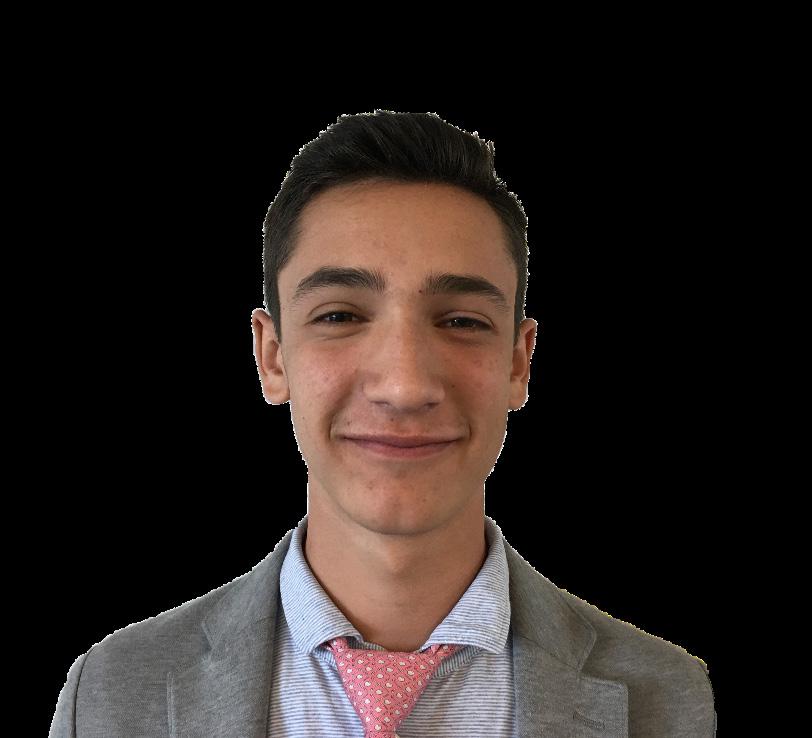
Meal-plan lunches should be larger, healthier
breaded chicken, pasta, and sandwiches galore. But honestly, this isn’t the problem. As long as I’m working out or playing a sport, carbs give me energy and work in my favor. The sides are where the problem lies. On top of a carb-heavy main course, I peer into my brown box to find not one, not two, but three additional items that are detrimental to me as a student who sits in a desk seat for six hours straight. The Tuesday lunch menu has more than 50g of sugar. To put this in perspective, the American Heart Association calls for no more than 36g of added sugar…for the entire day. Here are my three solutions. First, replace Gatorade with water, or at least make it half and half. Without water fountains, giving me only one drink choice that contains 30g of sugar is a bad start to the school’s only meal. Second, provide more variety. If we’re only going to have one healthy snack, give a bit of While Yang incorporates an underlying message of assimilation and embracing one’s own identity toward the end of the novel, it does not negate the negative connotations of the whole novel. The underlying symbols of identity and assimilation are not explicitly shown enough, making the novel dangerous as a graphic novel presented to students. As Third Formers read this novel, they may not pick up on the satirical aspects of Chin-Kee’s character in particular, and instead, only leave the novel with reaffirmed stereotypes and new racist jokes that they may never have learned. If the author had been more clear at the conclusion of the story about his intended message in regards to Chinese culture, the novel may have been passable. Because it is not made abundantly clear, students and many faculty find its satire and racial commentary hard to both identify and learn from. Asian-American students at Haverford have experienced discomfort and have taken choice. Understanding that there should be no shared calculators, chargers, and pencils, my proposed solution is to separate the meal from the snacks. Each advisory should have a larger container with fruits and vegetables alongside the other snacks, giving students a choice for their sides. All I’m asking is that those students who need to eat healthily for their sports practices are given the opportunity to do so. Third, offer a second serving. I know it’s a big ask for cost reasons to replace sandwiches with grilled chicken or a salad, so I’ll refrain from touching the main item. Still, especially for our athletes, there should be an option for a second meal. Last year, nearly half of the students went back for seconds. I suggest adding an option to the Magnus Health App. When I take my temperature each morning, why not add a bubble that asks if I want a second serving given the day’s menu? I’ve witnessed the Sodexo staff in their assembly line after school has started, offense when peers laugh and make ridiculing remarks about outrageous illustrations and derogatory comments, something only exacerbated by the fact that there are only a few Asian faculty to defend them. Several members of the English department think there are much better alternatives about the Asian-American experience than American Born Chinese. We must also question why the English department, out of all the novels we read throughout high school, selected this novel so this solution would give them enough time to compensate. Sodexo has made a great effort to revamp its system, but there are changes they need to make. Get rid of sugary drinks, give a choice of snacks, and offer a second serving option. Without any dramatic fiscal changes, Sodexo can easily give students the spark they need to thrive in this strange but better-than-

American Born Chinese’s satire fails to get the message across
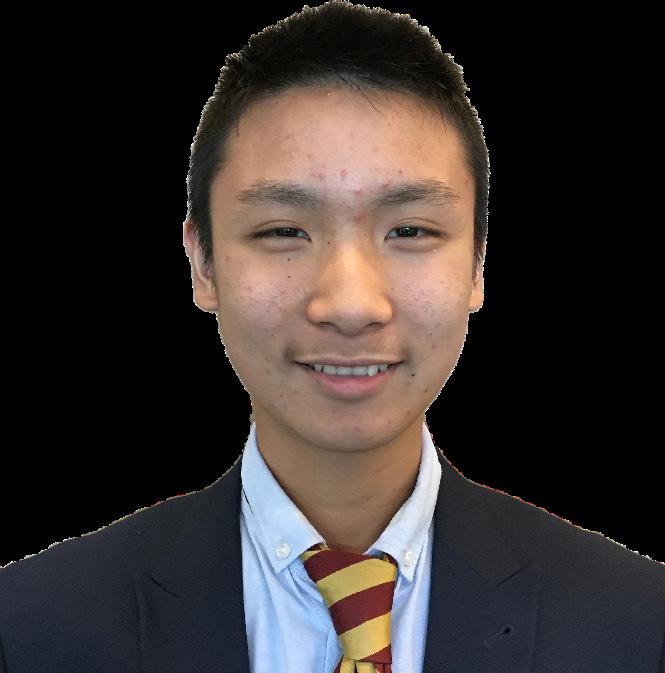
While Gene Luen Yang’s American Born Chinese attempts to use satire and overt racism to Quinn Luong ’22 nothing new year.
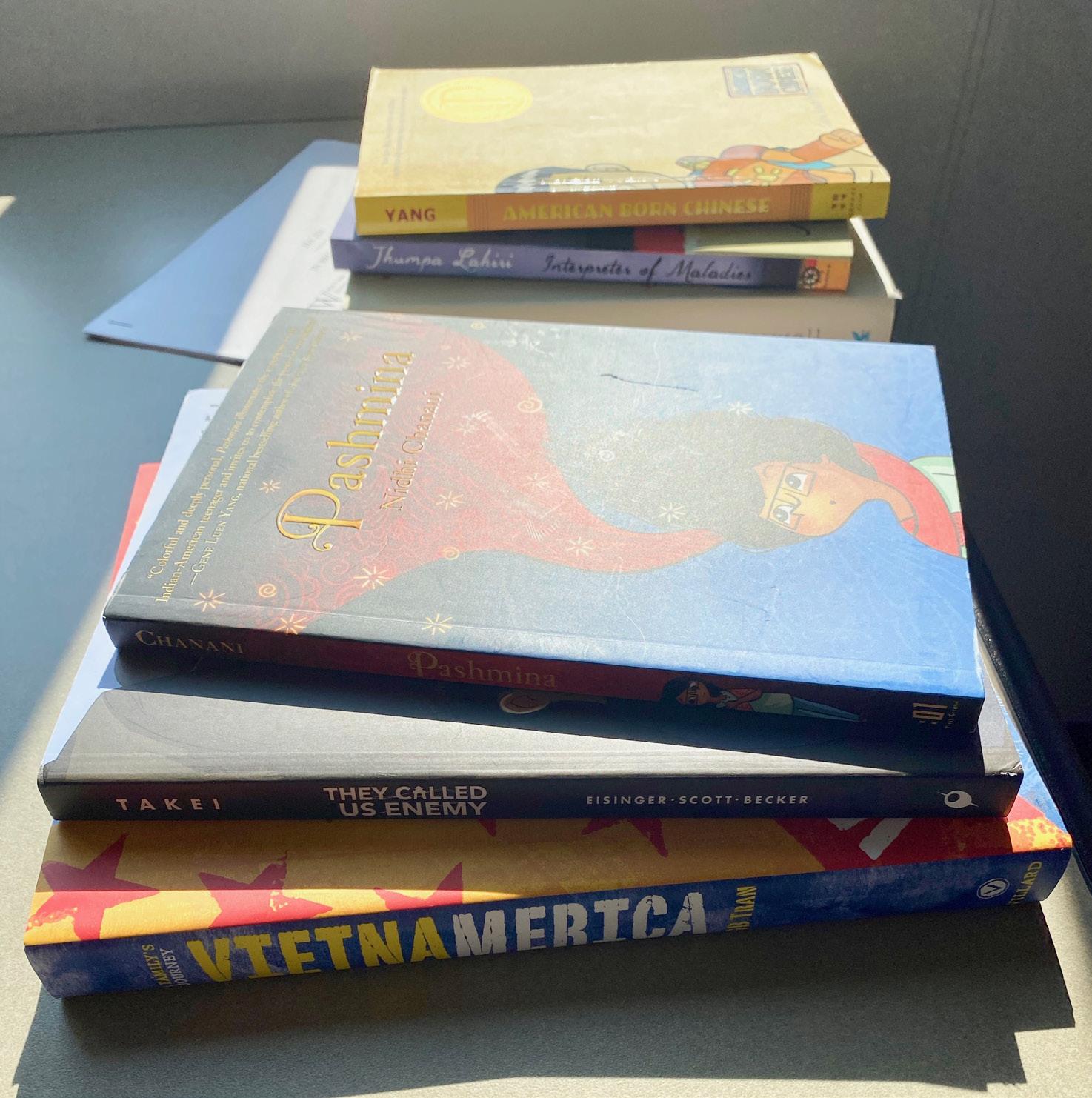
as a part of the very few pieces of literature about the Asian-American experience within our curriculum. Therefore, this book should not be taught to English I students, and the English Department Chair should remove American Born Chinese immediately. Finding alternative graphic novels educating on Asian-American racial injustices and identity would be more worthwhile and effective.

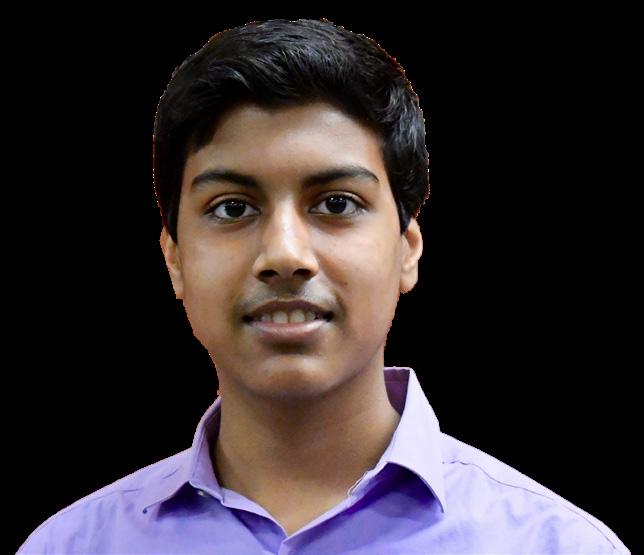
If indoor sports return, robotics should too
Arsh Aggarwal ‘24
Haverford’s Vex Robotics Program stands as one of the top programs internationally. The team has won the Pennsylvania State Competition for the last ten years and has managed to rank third in the world. The team’s success is largely thanks to the great coaches and the tremendous amount of hours students spend perfecting their robots. Amidst the COVID-19 pandemic, however, the school has prioritized in-person learning, forcing all extracurricular activities to a virtual setting. Also, priority has been placed on sports, with the school starting shorter, modified seasons. If Haverford is allowing the sports teams to practice, why is the Robotics program restricted to a virtual environment? There is no denying that the school’s reopening plan has all the necessary precautions to help prevent the spread of the dangerous virus. The school’s reopening was not only for academics but for the athletic program as well. Despite the delay of the InterAc seasons, the school has still opted to run practices of the various sports offered in the fall, winter, and spring. The continuation of sports like water polo and basketball, however, raises the question of why robotics is not allowed to hold practices at school. The aforementioned sports are played indoors where air circulation is minimal, and athletes are all subject to breaking social distancing guidelines. Robotics practices indoors as well, but faces much less risk of students breaking CDC guidelines. Firstly, all students will wear masks at all times, unlike indoor sports. Second, robotics allows students to stay socially distanced, minimizing the risk of transmitting the coronavirus. life is the new quarter-block schedule. Despite hearing mostly grievances from my peers, I believe the current schedule has benefits along with downsides.
A significant benefit of the new schedule is that it allows me to better focus on the current classes I’m taking. I find that fewer classes allow me to understand the material much better. Processing information from three subjects a day is significantly easier than processing information from six classes, especially when it is always the same three classes every day. New concepts learned on Monday are reinforced with homework, then immediately connected and applied to other concepts on Tuesday; the cycle then continues. While I feared that my teachers would bombard me with information and give me no room to breathe, I often forget that they are human too; they recognize that it is neither interesting nor effective for students if they spend the entirety of class talking in front of a whiteboard. With longer class peri “I think that if both take the right precautions, [some sports and robotics] should both be able to meet,” Fourth Former Roch Paraye said. “However, contact sports are not socially distanced, so the school’s reaction to being able to practice contact sports but not a socially distanced activity is hypocritical.” To prepare for the upcoming robotics season, Sixth Former Owen Gormley hosted practices at his house over the summer. Attendees were able to follow social-distancing and mask-wearing practices. The success of these unsupervised practices shows that the team can stay safe while working, and guidelines can be further enforced by the coaches and mentors. The size of the formal robotics room may raise concern, as it is smaller than would be necessary to comply with social distancing. However, there are other areas that could be used, such as the space outside of Ball Auditorium. As of now, the team is planning on hosting practices at various team members’ houses with limited people at each location. A big part of robotics, however, is communication within the team and having upperclassmen guide newer students in the right direction. A common practice area allows this to happen, but divided practices make it incredibly difficult. With the robotics program being one of the most successful teams the school has, it is imperative that the same priority put on sports is put on robotics. Conducting it in a virtual and divided setting places the team in a position of least success. If indoor sports practice at school, robotics should too.

Outdoor practice held for the robotics team over the summer at a student’s house
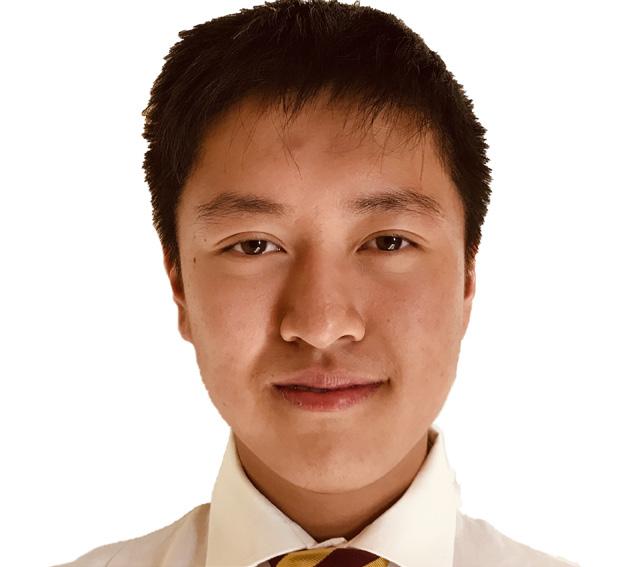
Is the new schedule effective?
Besides the masks, sanitization, and other strict guidelines, another significant change in our school
Bowen Deng ‘22 ods, my experience is that teachers are more willing to supplement lectures of raw information with activities such as discussions and collaborative classwork, which makes learning more engaging, enjoyable, and effective.
Fewer classes also mean fewer quizzes, tests, and essays. Less travel between classes also means that students and teachers are safer, something I believe we often overlook. Another smaller benefit of the quarter-block system is how it plays into what subjects you enjoy. If your favorite subject is in any quarter, you always have something to look forward to every school day. However, this can also be a detriment; if you don’t enjoy a class, having it for one and a half hours every school day will be especially tiresome. Furthermore, there is no balance of class difficulty. For quarters one and three, your schedule may only have one honors course. Then for quarters two and four, all three classes may be honors courses. Additionally, I worry about the gap between classes. In math and science courses, where topics almost endlessly build upon or relate to each other, a two-month hiatus between them seems questionable; the same can be said for any other subject. Students won’t forget everything they’ve learned throughout the first quarter in the second quarter, but they definitely will be impacted by this gap. Most noticeable, however, is the increased workload every night. Fewer classes does not mean less homework. On the contrary, it seems like teachers, knowing we only have three classes, assign more homework each night than they usually would. Reading a history textbook for one hour, followed by a science textbook for another hour can be extremely draining. The current schedule has potential. It has clear learning benefits, but also clear downsides. If shortcomings such as the imbalance COURTESY OF MAXIM KREIDER ‘21
